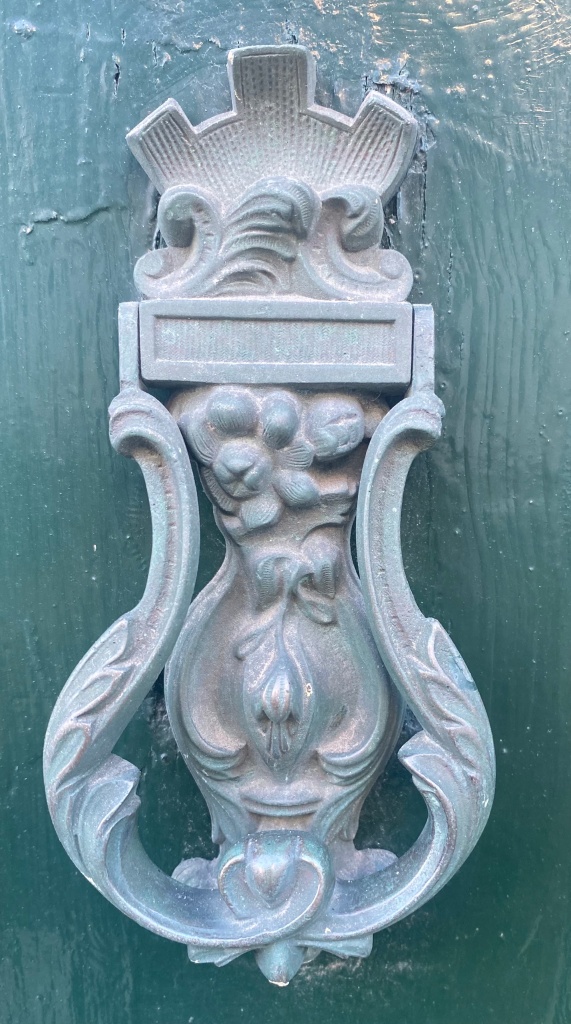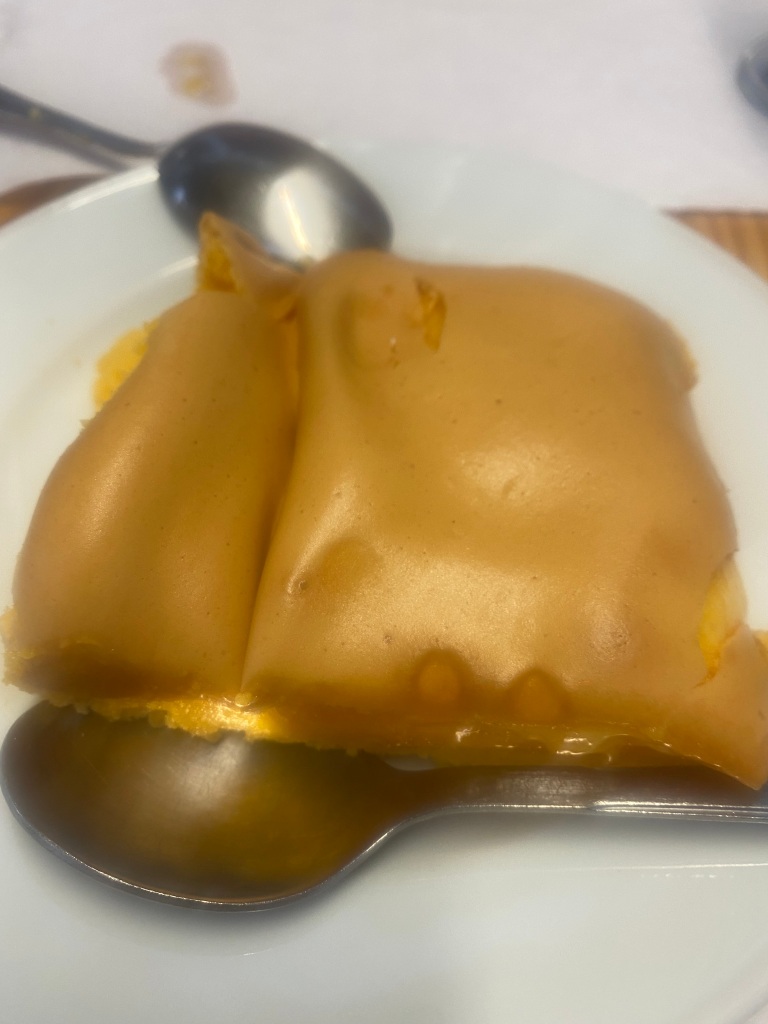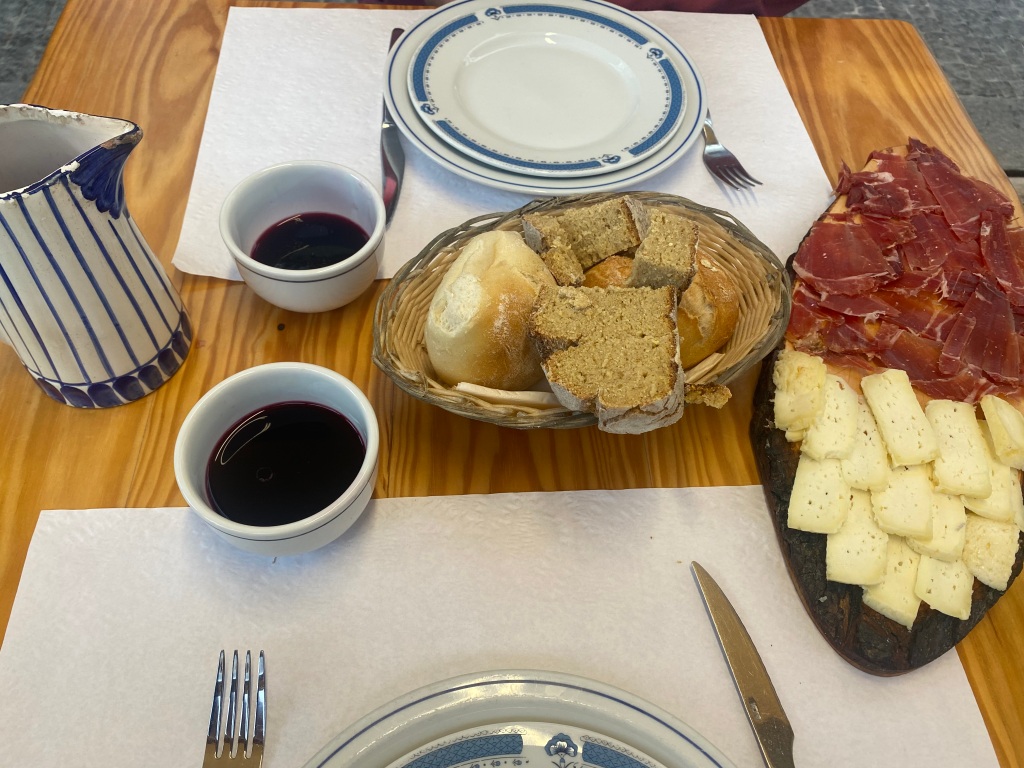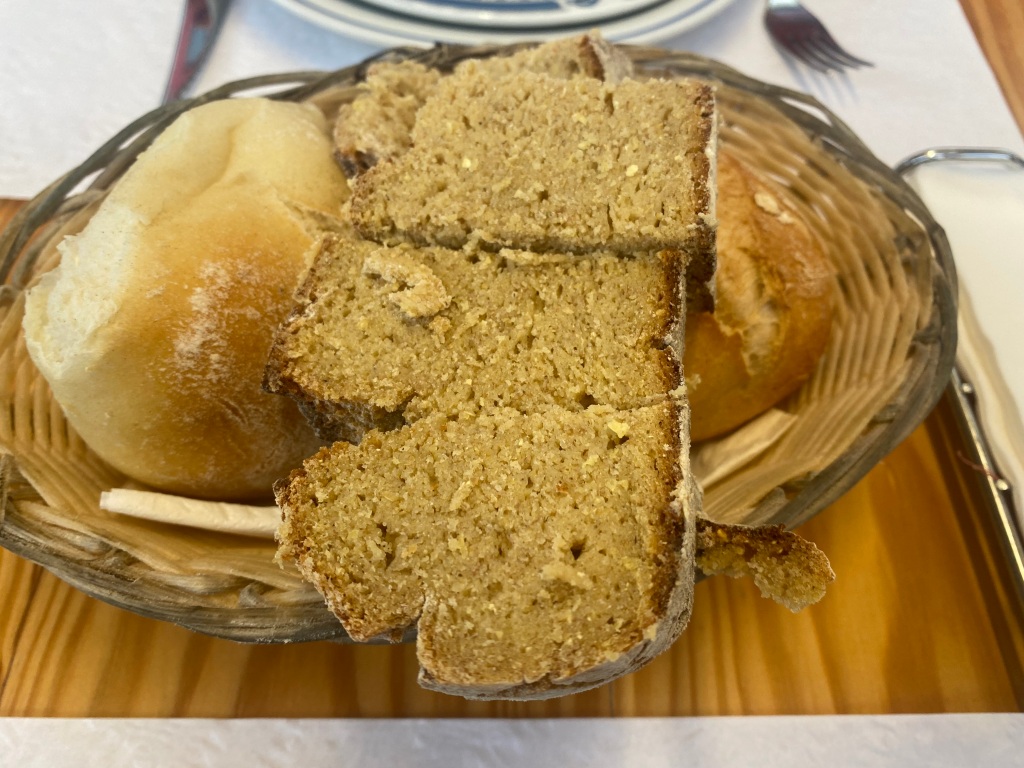We took the train to Viana so we could begin our walk the next morning. We only had a certain amount of time to get to Santiago and wanted to reserve a few days at the end to enjoy the Galician coast before heading back home. The last time we were in Viana was a few years ago traveling in our van with Luna, and I was excited to walk the streets and relive those memories. One that we especially wanted to relive was the great restaurant that we had stumbled upon that day where we enjoyed a fantastic meal of swordfish with rice!

My door knocker obsession……
Viana do Castelo is not just one of the most aesthetically beautiful towns in the Minho region, but it also offers plenty of history to its visitors. You can take the funicular up to the Santa Luzia hill for amazing views. Once up top you can also visit the Basilica of The Sacred Heart of Jesus and the Citania de Santa Luzia, part of the Castro Culture that dates back to the Iron-age.

Another obligatory visit while in Viana is the Gil Eanes ship, named after the 15th century Portuguese Navegator and Explorer. This is actually the second ship with the same name. The first ship was used captured and used by the Portuguese navy in WWl and then sent to Newfoundland to support the Portuguese fishing industry as a floating hospital. The ship you will now find in Viana was built in 1955 to replace the former. It served as a hospital, ice breaker, tug and supply ship for almost 2 years until it was abandoned at the port in Lisbon. Luckily, it was saved thanks to one Portuguese historian and today visitors can enjoy the fascinating hospital museum or stay at the youth hostel which occupies a great part of the ship!
It didn’t take us long to locate the restaurant, Casa Primavera. We were lucky to get a seat quickly as the line for tables got progressively longer throughout our dinner. We ordered the house red wine which is usually a “Vinho Verde Tinto” served in a ceramic jar with small porcelain cups, similar to how we drink the Ribeiro wine in Galicia. You can read about this in the posts below……..
The bread in Portugal is scrumptious to say the least. One of my absolute favourites is “Broa” which is made with corn and rye flour. The result is a slightly sweet bread that is dense and earthy. That night we enjoyed our bread with some local cheese and “Salpicão de Melgaço, a cured and smoke sausage made from the Bisaro pig. The first time I learned about the Bisaro Pig was in Lisbon a few years ago.

Our main course had to be fish with boiled potatoes and cabbage drowned in olive oil. We enjoyed both the swordfish which is called “espadarte” in Portuguese and the black scabberfish. In Portuguese, piexe espada preta.

Dessert was an easy choice. Pão de Ló. You may find Pão de Ló translated as a spongecake. However, depending on where you enjoy this dessert, that may or may not seem to coincide with what you are actually eating. The origin of this dessert crossed many cultures and centuries before it evolved to the version you will find in the northern region of Portugal today. You can enjoy variations in Italy, France, Spain, Holland, Romania and Turkey. The Portuguese explorers even introduced this type of cake to Japan and you will still find it under the name of Castella, “a cake from Castile”. The Pão de Ló from Ovar that you see below is made with mostly egg yolks, sugar and a small bit of flour. It is a common Easter sweet throughout the country and the amount of flour is what marks the difference.

Beautiful tiles……….
Happy and full from our amazing dinner we were lucky to catch some of the “marchas populares” before heading off to sleep like good pilgrims. In the videos (not the best quality) you can see the illuminated Basilica at the top of the hill. Enjoy and buen camino!!













